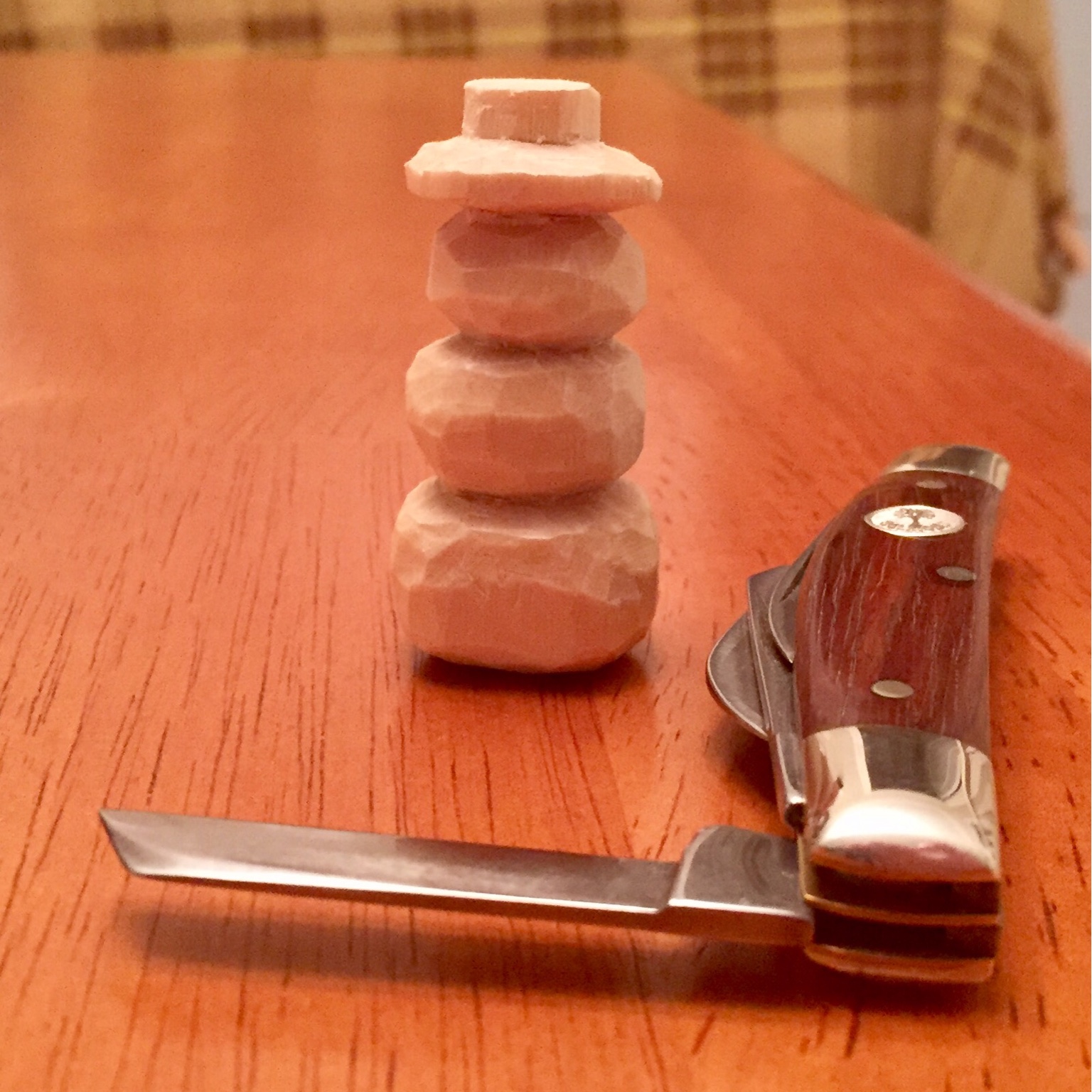Spoon carvers, consider getting a couple of carving gouges for hollowing out spoon bowls.
I have several bent knives/hook knives etc., but I find that in most cases I like gouges better for that work.
If a deep ladle, kuksa or bowl is the project, then a short bent gouge will be needed.
Bent knives certainly work, but I think that tradition is the main reason they are popular. In the past, it was a lot easier to make a bent knife than a gouge. It still is if you are making it yourself.
By the way, it is not all that hard to make your own bent knife. Wear eye protection and gloves for this stuff. You need a small flat file to make the blade (search flea markets etc for old worn out ones). With a propane torch, heat the old file to non magnetic heat - when the magnet won't stick it is hot enough. Let it cool slowly. This will render the old file soft enough to file with an unsoftened file.
Now with a nice new file (or an old one that is still sharp), file off all the teeth on the old file, and shape the edge with a nice long smooth bevel on the side that will become the outside of the bend. This shaping can be done more efficiently with a bench mounted belt sander and a new 80 grit belt, later finishing with 120 and 220 belts. I cannot recommend a bench grinder for this - though it can be done. (If you can do this work with a bench grinder, you do not need advice from me!). If you have not done this kind of work a lot, stay away from the bench grinder! It is a tool wrecker for edged tools in the hands of the vast majority of people. No bench sander? The file will work just fine, and you absolutely will not burn the steel. A vise will be very useful in this process.
Once you have the blade shaped the way you want it, sharpen it up. This will save time later. No need to get it super sharp by stropping it at this point.
Get a piece of round steel bar or a pipe of the radius that you want on your blade and clamp that firmly in the vise.
Heat up the blade again to non magnetic and maybe just a little more, and then using that pipe as an anvil (use an anvil if you have that! I am guessing that if you do have an anvil, forge etc., you already know a lot more than I do about this process), using a hammer tap the blade to shape. You can hit it pretty hard with no danger, as long as the steel is red hot - non magnetic. Re heat and re tap if necessary. Make sure that the bevel on the blade (bevel on one side only) is on the outside of the bend.
Now get a bucket of water ready. Room temp. is OK. Heat up the blade to non magnetic again and then put it quickly into the water. The steel should be very hard at this point and could break if you drop it on concrete. Test it by trying to file it with the sharp file (in an inconspicuous spot). The file should not bite. If it does, reheat and re quench. The blade will be too hard a brittle to use in this state.
Now you need to shine up the blade in preparation for tempering. Us find sandpaper etc. Now heat the blade slowly and carefully and watch the colors form on the steel. You may want to practice this on a scrap piece to get a feel for this. Some people like to do this on a stove.
When the edge turns a light straw color take away the heat and quench it.
Make a handle and attach using whatever approach you like, sharpen and use.
I know that real knife smiths will consider the above to be way oversimplified, and that experts can do a lot better, BUT every tool that I have made using the above approach has worked just fine for a long time. You can do it too, and it will cost you very little, you will have fun doing it too. If your time is worth too much to do it, (I assume you don't have time to watch TV or play video games either then), then the ones that are commercially available are a really good deal.









